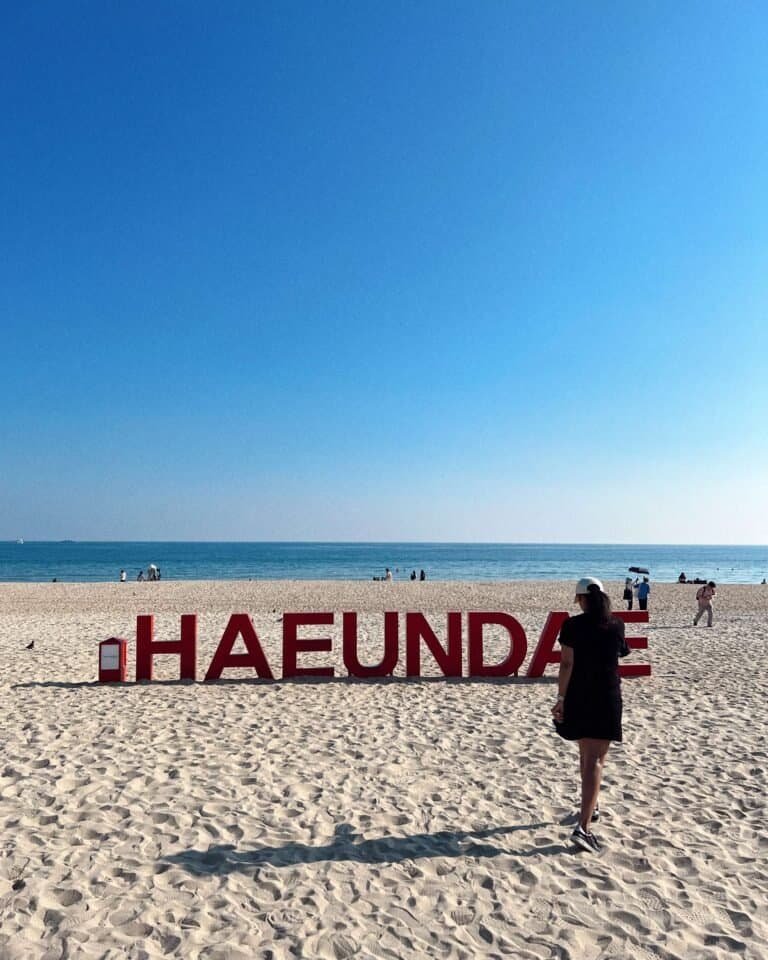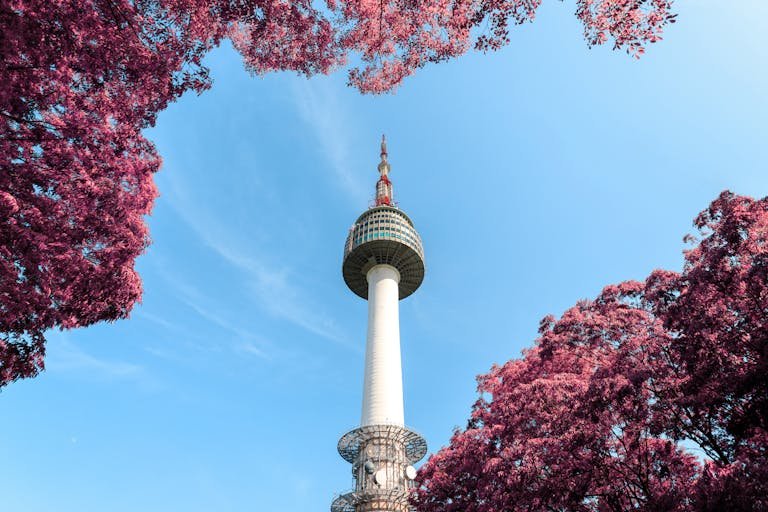The Perfect 5-Day Itinerary to Tokyo: The Ultimate Guide + Map

This post may contain affiliate links. That means if you click and make a purchase, I may earn a small commission at no extra cost to you. I appreciate your support!💙
Planning a trip to Tokyo? I have the ultimate 5-day itinerary to Tokyo ready for you. Whether you’re visiting for the first time or returning to explore more, this itinerary is made to give you a full experience of Japan’s highlights in five full days.
Tokyo is a city where ancient traditions blend with modernity. In Tokyo, you’ll find vibrant neighbourhoods, temples, exquisite food, and neon-bright lights.
Tokyo has been a bucket list destination for me since I was a teenager, and it did not disappoint. I loved my visits to Japan in September 2023 and March 2024, and I madly fell in love with the country and especially the food.
But I’m not the only one. It feels like everyone is planning a trip to Japan. Japan is popular and has seen a massive influx of tourists. And you can tell when walking around Tokyo. The city is crowded, but despite it all, it’s also fantastic.
If you’re still unsure about your Japan trip, steal my two-week Japan itinerary that covers all the major cities. And if you’re still unsure if Japan would be a good destination for solo female travellers, it is!
- ⛑️ Do NOT travel without travel insurance: Check out Safety Wing for reliable travel insurance.
- 🏨 Stay in Tokyo Stay Shibuya or Hotel Vista Tsukiji.
- 🏙️ Get tickets to Shibuya Sky.
- ✈️ Book your ticket to Tokyo with Skyscanner.
- 🎰 Find the best tours and excursions to Tokyo with the flexible Get Your Guide.
- 🎫 Book your train tickets for Tokyo easy online via Klook.
- 🚝 If you benefit from the JR Pass get it from Klook.
- 🏩 Book your hotel with the reliable Booking.com.
5-day itinerary to Tokyo overview
- Day 1 in Tokyo: Senso-ji, Ueno and Akihabara
- Day 2 in Tokyo: Tsukiji Market, Tokyo Tower and Shibuya
- Day 3 in Tokyo: Gotokoji Temple and Shinjuku
- Day 4 in Tokyo: Day trip to Mount Fuji
- Day 5 in Tokyo: Asakusa and Imperial Palace
Where to stay in Tokyo
If you’re travelling to Tokyo, I recommend staying in Shibuya, Shinjuku, or Ginza. Let’s review each area and its perks! If you’ve purchased a JR Rail Pass, they’re all connected to the JR Line.
Shibuya
If you would like to stay in the centre of Tokyo, in a central location, I would stay in Shibuya. Shibuya is the Tokyo you recognise from all the movies. The city is big, vibrant, noisy, and neon-lit.
You can shop until you drop, and you’re close to Shibuya Sky and the famous Shibuya Crossing. Plenty of restaurants, bars, and shops keep you company. There’s also a lot of traffic, and you’ll walk a lot!
I enjoyed the many quirky department stores and malls in Shibuya. You’ll also find excellent hotels in Shibuya.
Hotel in Shibuya
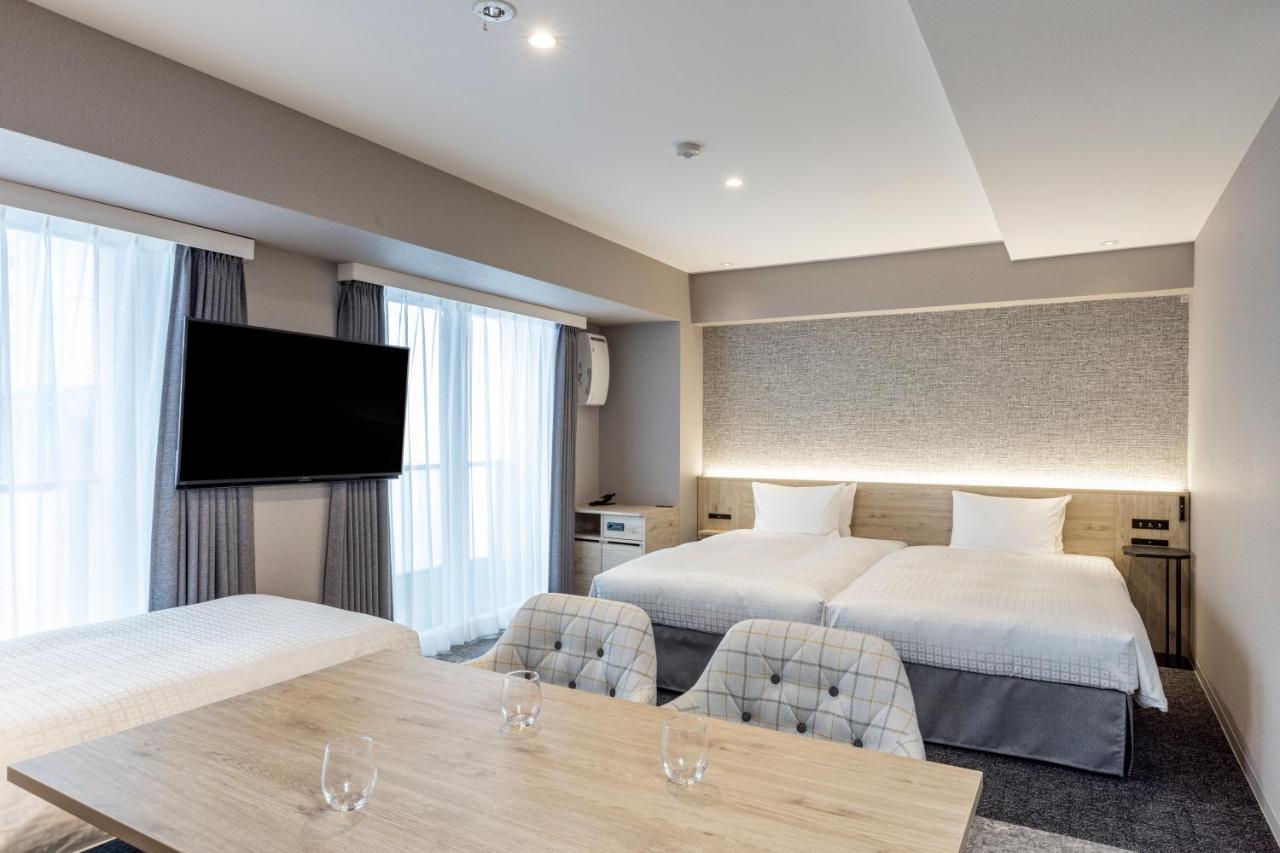
Tokyu Stay Shibuya
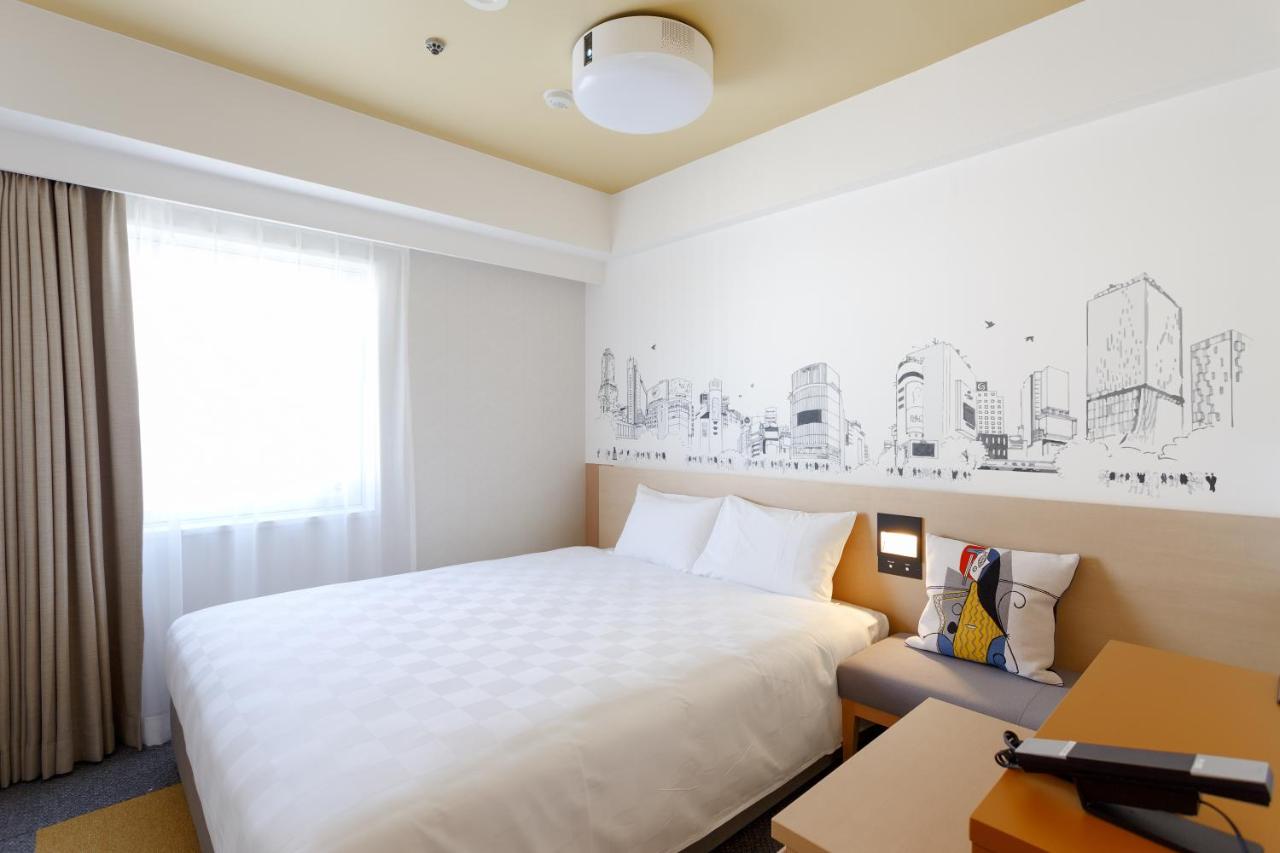
Shibuya Tokyu REI Hotel
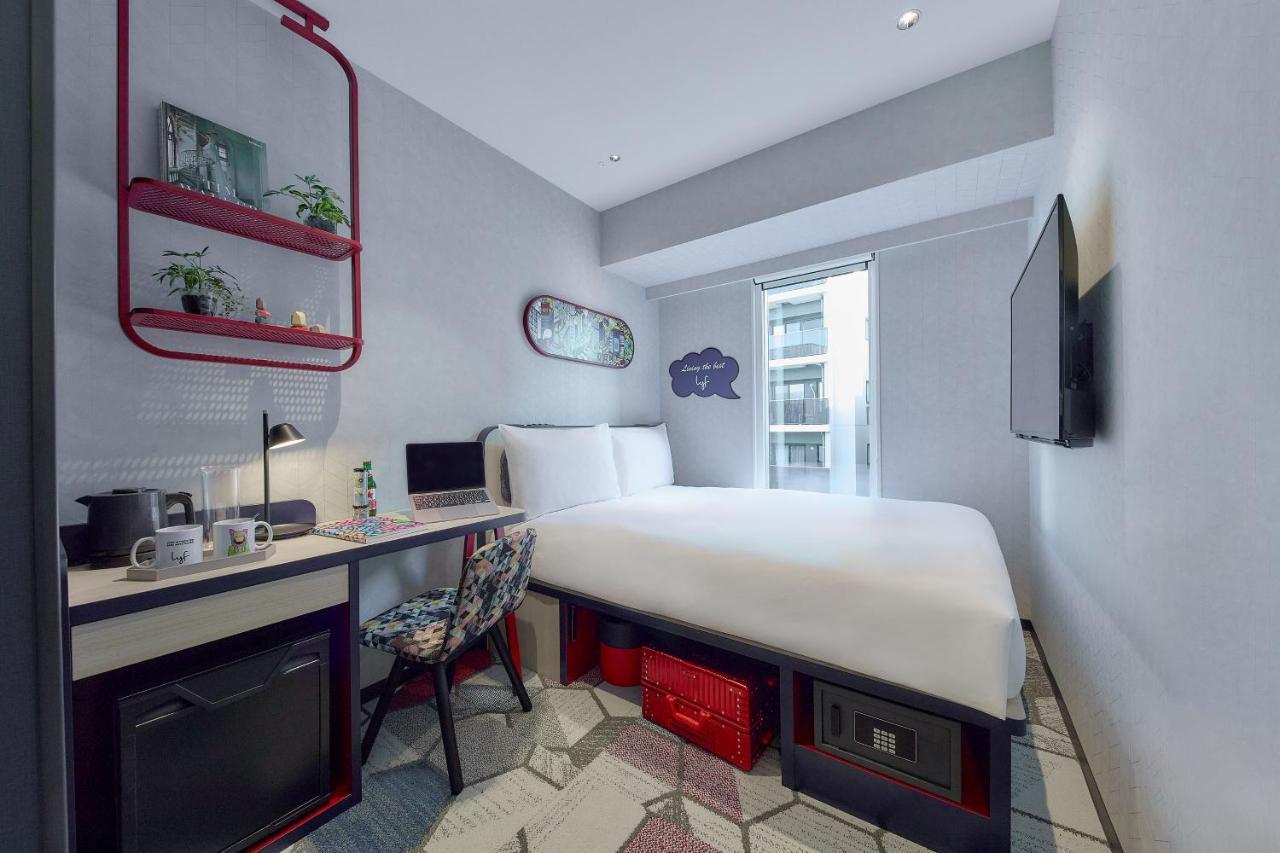
lyf Shibuya Tokyo
Shinjuku
Shinjuku is my favourite city to stay in! You either love it or hate it. It’s just as vibrant as Shibuya but also a little dirtier. It’s the home of Kabukicho (the old red light district), Golden Gai and Omoide Yokocho.
You’ll find just as many restaurants, bars and shops as Shibuya. You’ll also find many host bars, cosplay theme places and arcade halls. Some parts are a bit grungier and crazier than Shibuya. It’s hard to explain, but you have to see for yourself.
Shinjuku is safe, and I found the area interesting! It’s also within walking distance of many places (Golden Gai), making walking home after an evening out easier. You’ll also find more budget options for staying and eating here.
Hotels in Shinjuku
Ginza
Ginza is perfect if you want to stay in a more upscale part of Tokyo. It’s quieter, has no neon billboards, and is more spacious overall. Ginza is also home to more luxurious department stores and restaurants.
Stay in Ginza if you’re looking for a more luxurious vibe and are willing to pay more for accommodation. It’s conveniently located near Ueno, Tokyo Station, and Asakusa.
I would recommend a stay in Ginza for families and travellers looking for a quieter and trendy neighbourhood.
Hotels in Ginza
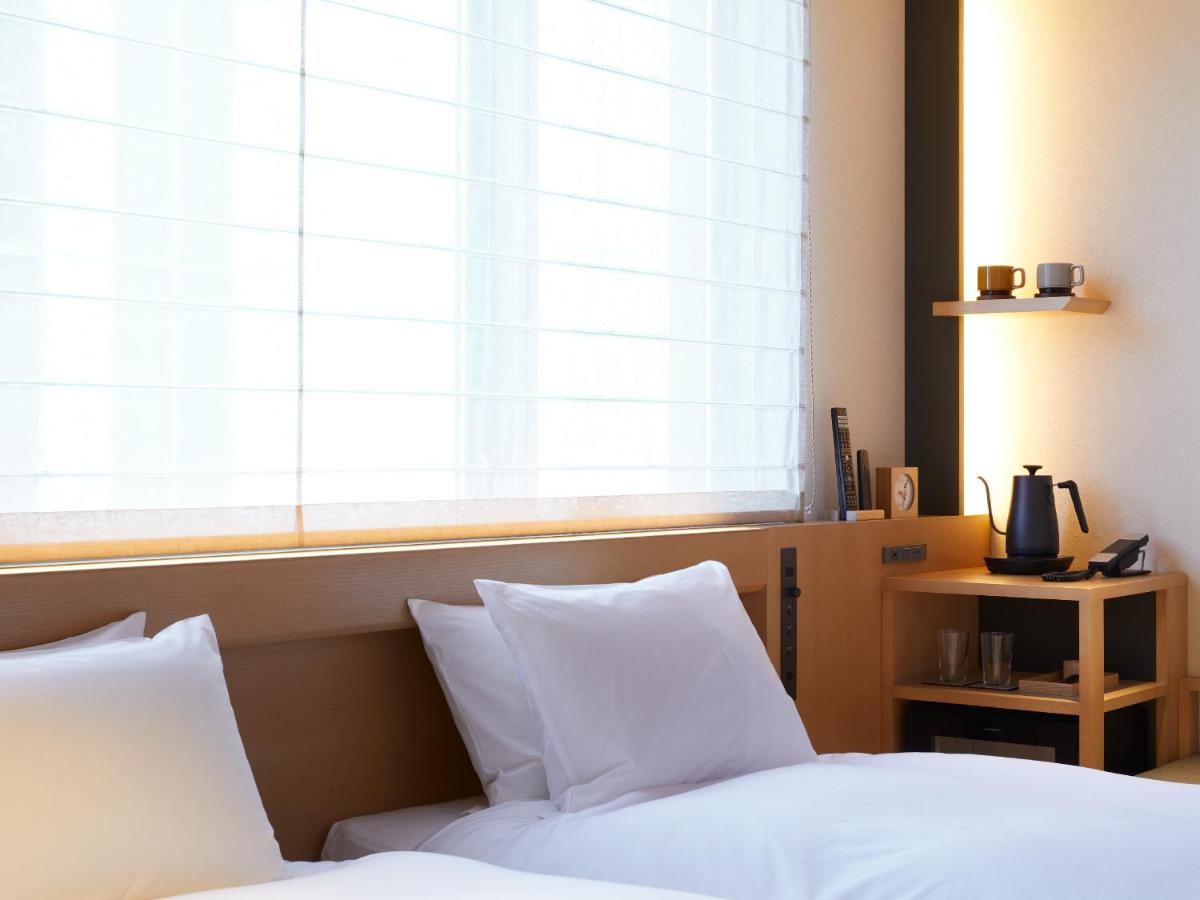
Agora Tokyo Ginza
Is 5 days in Tokyo enough?
Five days in Tokyo is enough time to get to know the city well! You can visit all the key spots, such as the famous Shibuya Crossing, Senso-ji Temple, Ueno Park, and Shinjuku. Plus, there’s time to explore the city at a more relaxed pace.
In five days, we’ll even have time to plan a day trip to Mount Fuji, a must-visit when in Japan! We’ll also visit Gotokuji Temple and Shimokitasawa, a trendy and artsy neighbourhood famous for its thrift stores.
If five days in Tokyo doesn’t fit your itinerary, check out my 3-day itinerary to Tokyo!
5 days in Tokyo budget
Tokyo has the image of being expensive, but things have changed over the years. Currently, the Japanese YEN is low, which means more YEN for your bucks compared to ten years ago.
When I planned my first solo trip to Tokyo, I was surprised by how affordable Tokyo can be. The biggest splurge is going to be accommodation. However, even for budget travellers, there are plenty of affordable options in good locations.
Think $100 per night for a small double room.
You can choose to get one of your meals from the convenience store, which is amazing. Think sushi, onigiri and egg sandwiches.
For dinner, you have plenty of great options, from budget to high-end. Great yakitori, gyoza, ramen, or izakayas will cost you around $30, and a full omakase dinner in a fancy sushi restaurant can cost $200.
Most tourist sights in Japan, like temples and shrines, are free to enter. Booking a tour or workshop will set you back from $50 to $100.
Is Tokyo safe for solo female travellers?
Japan is generally an incredibly safe country — in fact, it’s one of the safest places in the world to travel to, making it an ideal destination for solo female travellers.
Of course, like anywhere, it’s smart to stay aware and take basic precautions, but you won’t need to be hyper-alert like in some other places. Just follow the usual safety habits you’d use at home or anywhere else, and you’ll be fine.
Most people in Tokyo are kind, honest, and helpful. I felt very welcomed and well looked after during my trip!
- 14 Surprising Things to Know Before Travelling To Japan: Respect The Culture Like A Pro
- The Ultimate 2-Day Highlights Itinerary To Traditional Kyoto
- Don’t Miss These Fantastic Boutique Hotels in Kyoto for A Unique Trip
- 9 Expert Reasons Why Japan is Fantastic for Solo Female Travel
- The Best 6 Top-Rated Food Tours in Osaka: Taste Japanese Cuisine
- Discover The Best Tours To Mount Fuji In Japan For An Epic View
- How To Use Public Transport In Japan: Do Not Get Lost
- The Perfect One-Day Itinerary To Kyoto
- The Ultimate 2-Week Solo Itinerary: First Time in Japan
- The Ultimate Solo Female Travel Guide To Kyoto
- The Perfect 5-day Itinerary to Tokyo: The Highlights
- 3 Days in Tokyo: see, eat and explore it all
- My Highlights 10-Day Itinerary to Japan: Tokyo, Kyoto, Osaka & Mount Fuji
When is the best time to visit Tokyo?
Tokyo is a beautiful destination to visit from spring through fall. Cherry blossom season (late March to May) and the autumn foliage season (November) are especially magical — but keep in mind, they’re also the busiest and priciest times to visit.
Summer in Tokyo
Summer in Japan gets hot. If you’re into that, go for it — but honestly, the older I get, the less I want to be out and about when it’s sweltering. If you’re after warm weather without the intense heat, I’d recommend visiting Japan in September.
The mornings were a bit chilly, but once the sun came up, it was perfect. I lived in shorts, dresses, and sandals — even in the evenings, Tokyo felt super comfortable. No jacket needed, and no rain either. Total win.
Winter in Tokyo
I also visited Tokyo at the end of March, and the weather was still chilly and cold most evenings. Expect a temperature, on average, of 13°C (55 °F). However, that doesn’t spoil the fun. Crowds are less than during summer, but the amazing vibes are always there.
Maybe I was still in my winter era, but I didn’t mind the chilly weather at all. The cooler temps made sightseeing and walking around way more enjoyable than sweating it out in 30°C (95°F) heat.
Just a heads-up, though: check the weather before you go. It turned out to be much colder than I expected when I got there. Japanese winters can be cold, so pack accordingly.
The cherry blossom or fall foliage season in Tokyo
If you can swing it, plan your Japan trip during cherry blossom season or in the fall—these are hands down the most magical times to visit. Spring turns the country into a dreamy pink-and-white wonderland with sakura in full bloom, while autumn shows off with fiery reds, oranges, and golds everywhere you look.
Both seasons are stunning, but they’re also peak travel times, so expect bigger crowds and higher prices. When I went in late March 2024, I was just a bit too early and I was bummed. Unfortunately for me, the weather had been colder than usual, so the blossoms hadn’t fully bloomed yet.

How to get around in Tokyo
Tokyo has amazing public transport. However, it can feel a bit intimidating when reading about it at first. I’m here to tell you, do not worry. I let the internet drive me crazy with all these tips and explanations. So I’m going to make it as simple as possible.
Use Google Maps or Apple Maps for navigation. It tells you exactly which line name, the subway number, the direction, the colour and which exit you need to take.
Pay attention to the signs. This is important because there are so many. And if you don’t understand something, ask. People are very helpful, and larger stations have a tourist information desk.
I have a detailed post on how to use public transport in Japan to get you going.
JR Pass
The JR pass gives you access to all JR trains and the JR Yamanote line. This line is a loop line and stops at all major stations. If you’ve purchased a YR pass, it’s beneficial to take the Yamanote Line because it’s free.
Suica Card
In April 2023, you could still buy a physical Suica card at the airport. However, it’s just as easy to download the digital Suica transport card on your iPhone, which is what I did.
You top it up with a credit card and use your phone to check in or check out. Easy! My sister, however, has a Samsung and had to buy a physical card.
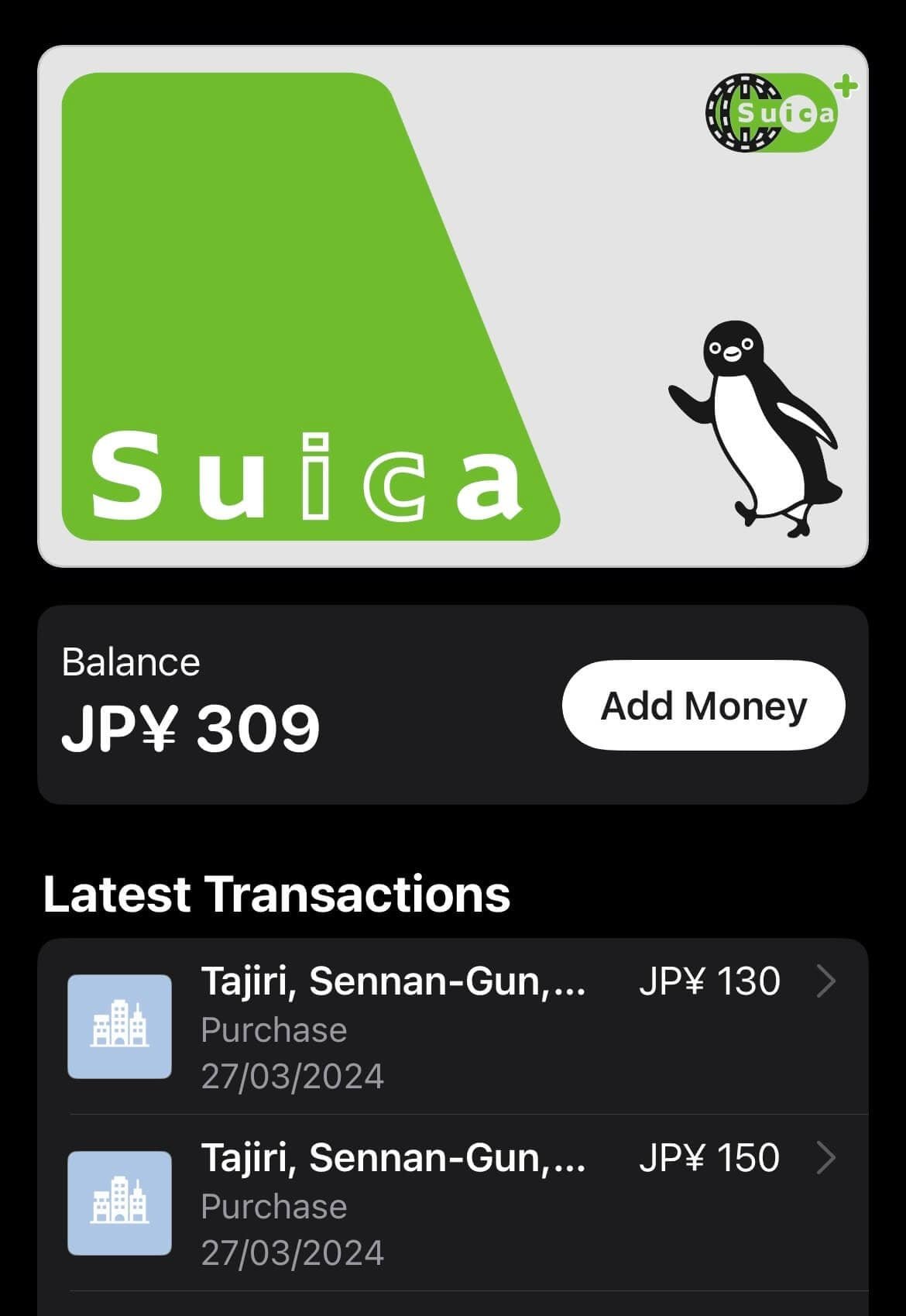
Things to do on your 5-day itinerary to Tokyo
Tokyo is big, so if you only have five days to explore the city, you must make choices. I’ve been to Tokyo twice, each time for four days, and I can safely say that I’ve covered the most iconic sights!
I recommend the following. Feel free to substitute any of these activities for the ones in the itinerary below if they better match your vibe.
Senso-ji Temple & Nakamise Shopping Street
Senso-ji Temple is one of the main sights in Tokyo. It’s the city’s oldest temple, and the energy there is amazing. Walking through Nakamise Shopping Street to get there is a vibe.
It’s lined with stalls selling traditional snacks (I tried takoyaki, octopus in dough-shaped balls) and cute souvenirs. The whole area is super photogenic, especially the giant red lantern at the Kaminarimon Gate. I’d recommend going early or around sunset when it’s less crowded.
Tsukiji Fish Market
Tsukiji Market is absolute heaven if you’re into food! You’ll find stalls selling fresh sushi, grilled seafood, tamagoyaki on a stick, and all kinds of snacks I’d never tried before. It’s touristy, and don’t expect there to be street food prices.
I had the best sashimi bowl and sushi of my life there!
Tokyo Tower from Shiba Park
If you want to take photos from the iconic Tokyo Tower, head over to Shiba Park. From there, you can get great shots, and it’s a great spot to relax. I saw many people sitting in the grass and relaxing with each other or with a book.
Prince Park Hotel for sunset drinks
The Prince Park Hotel is known for its bar with an epic view of Tokyo Tower—especially once the sun sets and the lights come on. It’s a seriously dreamy spot for a drink with a view. The bar opens at 17:00, and it’s smart to make a reservation if you can. When I went, there was already a line before it even opened, so we ended up skipping it.
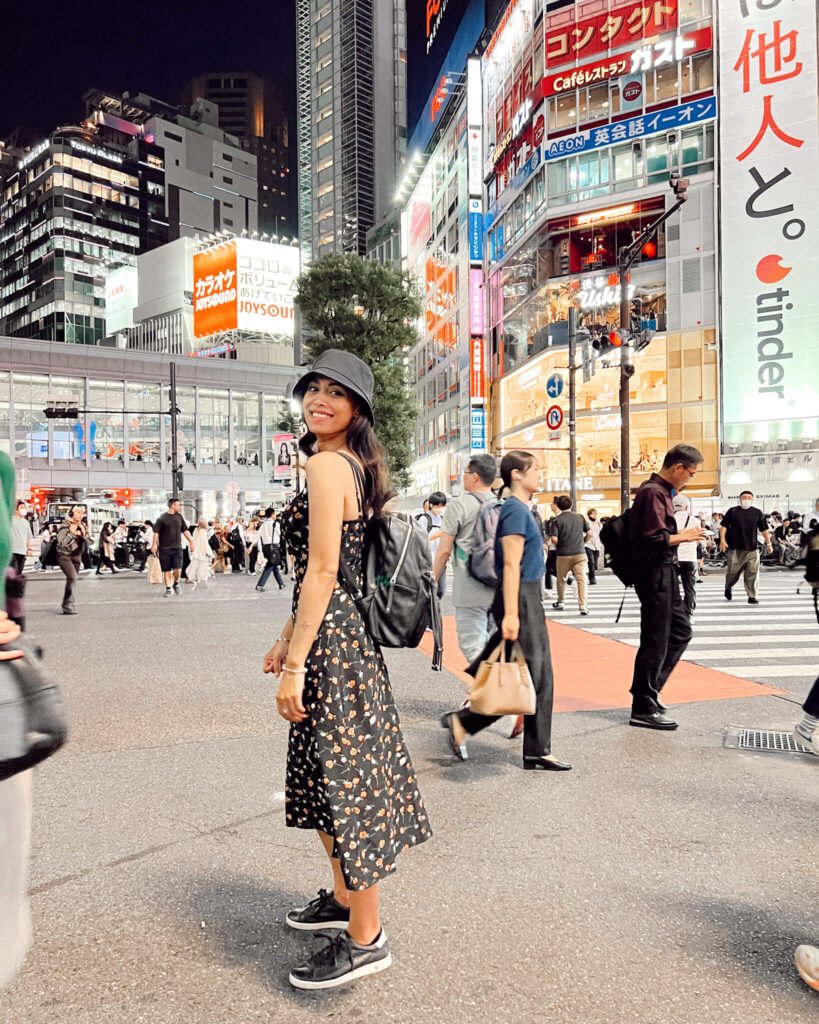

Shibuya Crossing
Shibuya Crossing is iconic for a reason, but just a heads-up, it is still just a regular crosswalk. It’s most impressive during peak hours, like in the morning rush or early evening when everyone’s heading home from work. After taking it all in, you can dive into shopping because Shibuya has loads of cool stores, from big brands to quirky little boutiques.
Shibuya Sky
Shibuya Sky is a must if you’re after that epic city view. It can get pretty busy, so I’d recommend booking your tickets a few weeks ahead, especially if you want a sunset slot (those go fast!).
Just a heads-up: if it’s too windy, they close off the outdoor area. That happened to me, and I missed out on that iconic escalator shot with Tokyo in the background.
Shinjuku: Golden Gai & Omoide Yokocho
Shinjuku is one of my favourite neighbourhoods in Tokyo. It’s a little rougher around the edges, but that’s exactly what makes it fun. It’s the raw, edgy side of Tokyo, in Kabukicho, it’s full of quirky bars, cosplay spots, host bars, and late-night energy.
Golden Gai is a must for a drink; it’s a maze of tiny bars packed with character. I loved grabbing a drink there.
Omoide Yokocho is the famous alleyway lined with grilled skewers and izakayas. Honestly? It wasn’t for me. Way too cramped, packed with people, and super smoky. But maybe you’ll vibe with it more than I did.
Ginza: The Upscale Shopping Area of Tokyo
Ginza is a lovely neighbourhood in Tokyo with a luxurious, upscale vibe. The streets are wide and clean, featuring numerous high-end stores and restaurants. While bustling with activity, it offers a more peaceful atmosphere than other areas since it lacks the bright neon lights found elsewhere in the city.
Ueno Park
Ueno Park is perfect if you’re looking for a bit more serenity to escape the city buzz. The park is beautiful for a stroll or for sitting down with a book or a cup of matcha latte.
Especially if you’re not planning a trip outside of Tokyo, a quiet morning or afternoon in Ueno Park is amazing.
Shimokitazawa
Shimokitazawa is the artsy neighbourhood of Tokyo and was recommended to me by a local. It’s a great spot to combine with Goto Koji Temple (more on that in a moment) since it’s on the same route from Shinjuku or Shibuya.
You’ll find loads of thrift stores, cute coffee places and boutique stores. I love the laid-back and artsy vibe.
Gotokuji Temple
You don’t have to love cats to love this temple. Gotokuji Temple features a small area filled with lucky cat dolls. You can buy your own to add to the display. It’s a great photo spot, and you can enjoy walking around the temple garden.
Like most tourist sights, the temple is free to enter, but I always encourage you to make a small donation if you can.

The ultimate 5-day itinerary in Tokyo
Day 1: Senso-ji temple, Ueno and Akihabara
Morning: Visit Senso-ji Temple
Start your day at Senso-ji, Tokyo’s oldest temple, located in Asakusa. Enter through the iconic Kaminarimon (Thunder Gate) and stroll along Nakamise Street, which is lined with traditional shops selling souvenirs and snacks.
The main hall of Senso-ji is stunning, and you can partake in traditional rituals, like drawing omikuji (your fortune on paper) and offering prayers.
Don’t miss the nearby Asakusa Shrine and the gardens surrounding the temple for a great start to your day. Nakamise Street has many food stalls, perfect for a quick breakfast. I recommend trying the fresh melon bread stall!
Alternatively, you can explore Senso-ji Temple and Asakusa with a guided tour. You’ll get the history and all the cool places.
Afternoon: Explore Ueno Park and Museums
Head to Ueno Park, a cultural hub with something for everyone. Visit the Tokyo National Museum, showcasing Japan’s history and art. Ueno Park is a quiet, serene delight in a busy, noisy city like Tokyo.
Stroll through the park, and if you visit in spring, enjoy the breathtaking cherry blossoms. Stop by the tranquil Shinobazu Pond for a relaxing break and rent a paddleboat.
Evening: Discover Akihabara’s Electric Town
In the evening, check out Akihabara, Tokyo’s mecca for anime, manga, and electronics. Explore multi-story shops filled with the latest gadgets, games, and collectables. If you’re an anime lover like my sister, you’re going to love this neighbourhood.
Visit themed cafes, like maid cafes, for a fun experience. Don’t miss Akihabara Radio Kaikan, a landmark building with numerous stores catering to otaku culture. End your day with a delicious dinner at one of the many ramen or sushi joints in the area.
For more food options, check out Steak Lodge or Torijin in Akihabara.
Day 2: Tsukiji outer market, Tokyo Tower and Shibuya
Day two takes you to the culinary haven of Tsukiji Outer Market, where you can indulge in the freshest seafood and street food delights. You’ll find tranquillity in the historic Hamarikyu Gardens before diving into Ginza’s luxury shopping and artistic ambience.
As evening falls, experience the organised chaos of Shibuya Crossing and take in city views from Shibuya Sky.
Morning: Tsukiji Outer Market and Tokyo Tower
Start your day early at Tsukiji Outer Market, a food-lover’s paradise. Get fresh sushi, sashimi, and street food from other delicious vendors.
Expect it to be crowded and not cheap! It might be street food, but I feel they’re asking the gaijin (foreigner) prices. But the food is really good and worth it!
Afterwards, walk to Hamarikyu Gardens, an Edo-period landscape garden. Enjoy a stroll, and don’t miss the traditional tea house, where you can experience a matcha tea ceremony.
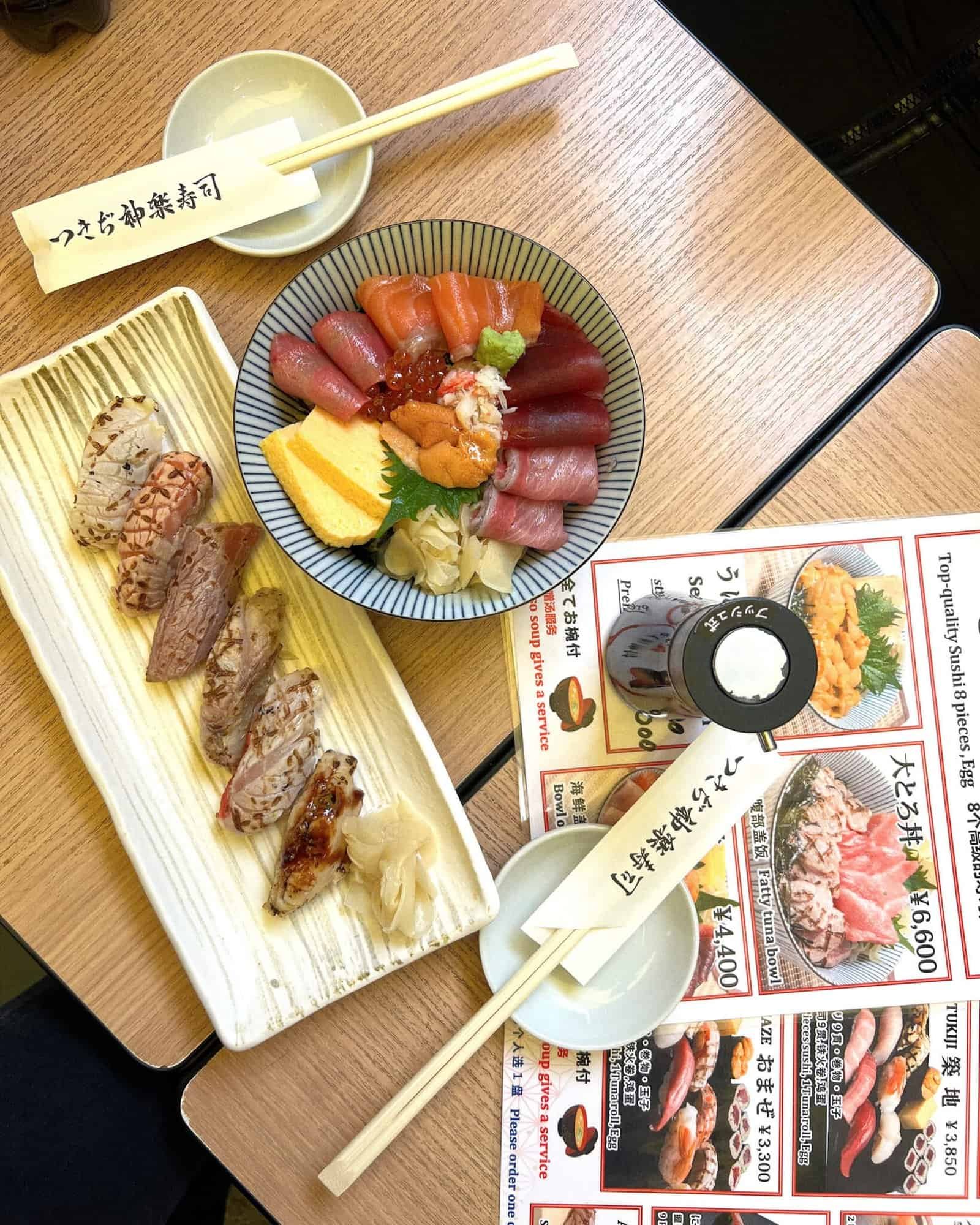
Afternoon: Shopping in Ginza
Take the subway to Tokyo Tower. You can take the best photos at Shiba Park!
There’s a famous spot nearby, near the restaurant Tofu Ukai, where everyone takes a photo from this stairwell case looking up at the tower. You’ll see a line, so it’s hard to miss. I was not in the mood to wait in line, so I skipped that photo op.
From there, walk to Ginza, Tokyo’s upscale shopping district. Explore flagship stores of luxury brands, department stores like Mitsukoshi and Wako, and trendy boutiques.
Take a break at one of Ginza’s many stylish cafes or enjoy a fine dining experience, and don’t miss the Kabukiza Theatre for a glimpse of traditional Kabuki performances.
Evening: Shibuya Crossing and Shibuya Sky
As evening falls, head to Shibuya, famous for the Shibuya Crossing and the cute 3D billboards. Join the crowd and experience the organised chaos of the world’s busiest pedestrian intersection. Remember, it’s just an intersection, but it’s fun to see how everyone can cross from every side, even diagonally.
There’s a famous Starbucks where you can relax with a dirty soy chai latte (my go-to drink) and watch people.
Arrange tickets for Shibuya Sky (they sell out fast, so book 4 weeks in advance), an observation deck offering panoramic views of Tokyo. Watch the city lights come alive as the sun sets.
Afterwards, explore the streets of Shibuya for dinner options, from izakayas to ramen to yakiniku restaurants. If you love to shop or need to get souvenirs, this is the place to be.
For dinner, check out the famous Ichiran (this joint in Shibuya is open 24/7), the sushi bar Ten, not far from Shibuya Sky. They have an amazing omakase menu.
Or the famous Gyekatsu Motomura, where you grill your gyekatsu (breaded beef steak) at the table!
If you’re up for some drinks or when you’re travelling alone, check out this highly rated izakaya pub crawl in Shibuya. It’s a fantastic way to meet other travellers.
Day 3: Gotokuji Temple and shinjuku
Your final day begins with a visit to Gotokuji Temple, famous for its countless lucky cat statues and then a walk through the bohemian streets of Shimokitazawa, known for its vintage shops and eclectic cafes.
Afterwards, we head to Harajuku for a quick stroll through Takeshita Street. Conclude your Tokyo adventure in Shinjuku, where you’ll explore neon-lit streets and savour traditional Japanese cuisine.
Morning: Gotokuji Temple
Begin your final day with a visit to Gotokuji Temple, known for its hundreds of lucky cat statues (maneki-neko). The temple grounds provide a unique experience, making it a great spot for photos.
When walking back from Gotokuji Temple to the subway station, check out Rarasand for coffee and cute cat-shaped cakes! I loved that cafe, and the cakes are delicious.
After visiting Gotokuji, head to Shimokitazawa, a trendy neighbourhood known for its bohemian vibe. Explore the vintage shops, boutiques, and cosy cafes. Shimokitazawa is a haven for thrift shoppers and, therefore, a must in this 5-day itinerary to Tokyo.
Afternoon: Harajuku
After Shimokitazawa, head to Harajuku. Harajuku can be extremely crowded, but it is worth walking through once. There are many clothing shops and food places. It’s a cute street, but it’s too crowded for me.
Evening: Shinjuku
End your Tokyo adventure in Shinjuku! Explore the neon-lit streets of Kabukicho, Tokyo’s famous entertainment and red-light district. The area has many good places to eat, bars and entertainment.
For dinner, head to Omoide Yokocho, known as “Memory Lane,” where you can get yakitori and other izakaya delights. This area can get very busy, so be there early. If you don’t like a lot of smoke, Omoide Yokocho might not be your favourite place.
The smoke from the grilled yakitori, people smoking and the crowd made it nearly impossible for me to relax, so this area might not be for you.
A visit to Golden Gai is a must when in Tokyo! Golden Gai is a maze of narrow alleys packed with tiny bars, each with its unique theme and atmosphere. Some bars only seat 4 people.
I loved walking around and grabbing a drink in one of the bars. The area is now mostly catered to tourists, but it’s still fun. Walk around the area and pick a bar to have a drink. Some bars ask for a cover charge, and not all bars accept credit card payments.
Where to eat in Shinjuku
You’ll find plenty of restaurants around for food, like the famous Sugoi Niboshi Rāmen (famous for their ramen), you’ll see a queue, Shinjuku Yakitori Nonotori and Oysters Inc (if you love oysters like me).
If you’re up for the full experience, check out this fantastic Shinjuku food tour. With a local guide, you’ll try out the food locals eat.
Day 4: Day trip to Mount Fuji
Today is the perfect day to take a day trip outside of Tokyo! I highly recommend a visit to the lovely Mount Fuji and its surroundings. However, depending on the season, it’s wise to check the weather first!
The best time to visit the area around Mount Fuji is during winter, from January to April. The mountain views are clear, and the snow-capped peak of Fuji-san makes the experience even more magical.
There are plenty of guided tours from Tokyo to Mount Fuji. Most tours cover a few of the area’s iconic sights, with stunning views of Mount Fuji in the background.
The tour might include Lake Kawaguchi, Oishi Park, the 5th Station, and the Chureito Pagoda.
>> I’ve put together a post with an overview of the best Mount Fuji tours for you.

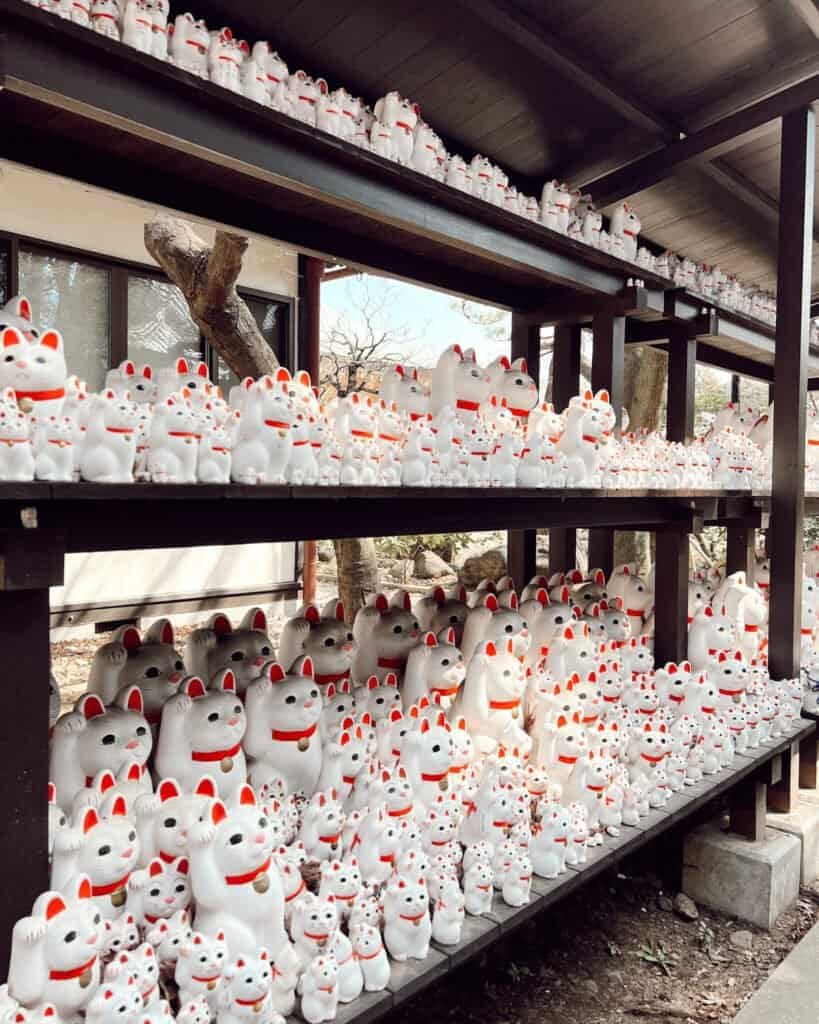
Day 5: Sushi class on the last day in Tokyo
Morning: Sushi class in Asakusa
You can’t leave Tokyo without a sushi class! This class is fantastic and starts early in the morning. I learned how to make ‘temari sushi,’ which has a round shape. You’ll get to eat the sushi you make, so breakfast is covered.
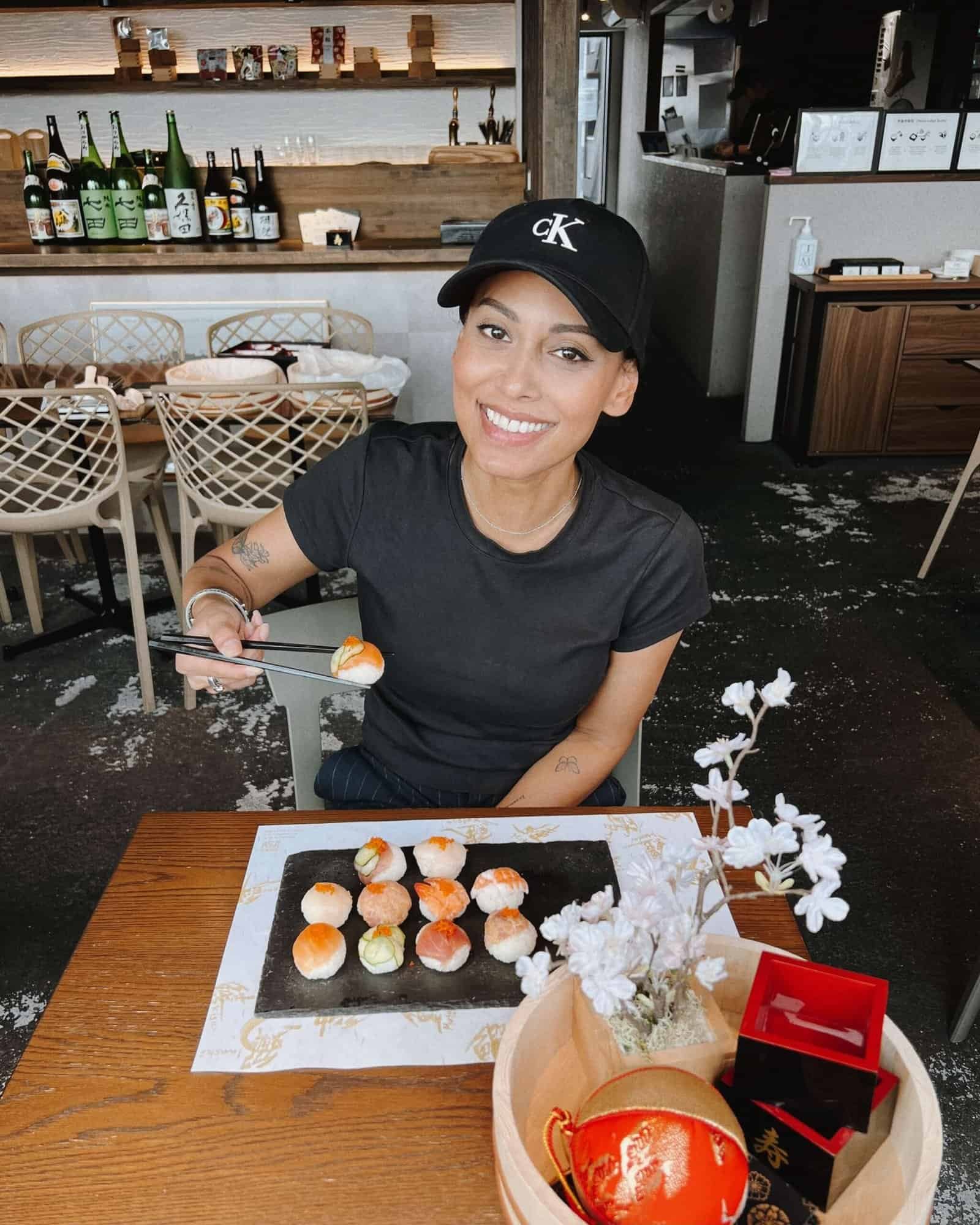
This sushi-making workshop is one of the best things I did on my trip to Japan, and I recommend it to everyone I know who’s visiting Tokyo. The chefs make the workshop into an entire experience.
The class takes about 2 hours, so you’ll have plenty of time to explore more of Asakusa after.
Afternoon: Imperial Palace & Tokyo Station
On your way back from Asakusa, a visit to the Imperial Palace and its East Gardens is great for your last day in Tokyo. While the inner grounds are closed to the public, the gardens are beautiful and offer a glimpse into Japan’s imperial history.
Tokyo Station is not far, and if you’re into architecture, you’re going to love this great architectural building.
TeamLab Borderless is another option for this afternoon, and it is worth a visit if you haven’t seen anything like it! It’s an immersive digital art museum famous for its colourful, futuristic digital art installations & photo ops.
I’ve seen something similar in Singapore, which was fantastic. I highly recommend that you check it out.
For lunch, head over to Butagumi Shokudo for delicious tonkatsu. I love a good tonkatsu that’s light, non-greasy and full of flavour. This place will do it, and it’s affordable.
Evening: Final souvenir shopping
For your final evening in Tokyo, head back to your favourite neighbourhood and soak up the last bit of Tokyo. Tick off anything you didn’t get around to, whether that’s shopping, grabbing a cocktail in Golden Gai, picking up the latest Japanese skincare products, or wandering through the iconic Don Quijote (Tokyo’s ultimate ‘everything’ store).
Treat yourself one last time to your favourite gyoza, yakitori, or whatever delicious dish you’ve been craving. Take it all in: the lights, the energy, the flavours, before you say sayonara. It’s the perfect way to end your Tokyo adventure on a high note!
Map of sights, restaurants and drinks for your 5-day itinerary to Tokyo
The best places to eat in Tokyo on your 5-day itinerary
Tokyo is packed with amazing food spots, but if you just wing it, it can get overwhelming fast. I proudly call myself a professional foodie (yep, self-appointed), so I always do the research before arriving.
Plan your trip
With my online resources
Use my travel planning roadmap with all my digital resources to book every detail of your trip!
I hope this 5-day itinerary to Tokyo will help you plan your trip to Japan! Five days is perfect for Tokyo; it’s a great start to see the city, and you’ll be back for more!
Tokyo is never boring; there is so much to see and do! If you’re feeling like planning an entire trip to Japan, I have a fantastic two-week itinerary to Japan for you! It’s perfect if you’re visiting Japan for the first time!
Do not forget to check out surprising things to know about Japan, always check the visa requirements for Japan and brush up on manners and etiquette in Japan. It’s a must to avoid confusion on your trip.
As always, I would love to know how you’re getting on in Tokyo! I’m always here for questions! The fastest way is to leave a comment on my latest Instagram post!








